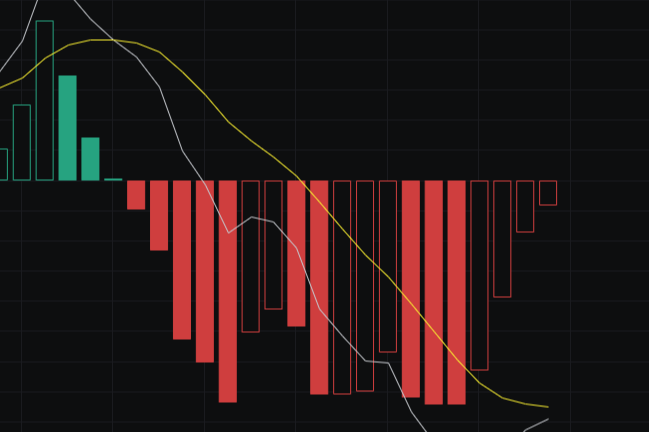The domestic investment market has always been a significant focus for me.
Recently, Hubei Province has introduced a policy that is very noteworthy: the "Three Transformations" of state-owned assets.
What do we mean by "Three Transformations"?
According to official statements:
"All state-owned resources should be assetized as much as possible."
"All state-owned assets should be securitized as much as possible."
"All state-owned funds should be leveraged as much as possible."
We can understand this in simple terms: package resources into assets in various ways, then trade those assets in the securities market, and finally, leverage as much as possible during this process. The target of this entire approach is all state-owned resources, state-owned assets, and state-owned funds.
An article published publicly cited a case to explain the detailed operation of this process:
A commercial building in Wuhan, if relying solely on rental income to recover costs, would take twenty to thirty years, which is inefficient, has a long cycle, and slow returns. However, if it is packaged as a financial product and traded in the market, the costs can be recovered as soon as it is listed.
The efficiency gained, costs saved, and time shortened through this method are simply incomparable to just leasing it out.
The advantage of the "Three Transformations" lies here.
Some say this is "Yin eating Mao grain."
I think if what is being consumed is "grain," at least it is something tangible; what is concerning is if it turns into "goods that do not match the standards" later on.
In the early stages of any new phenomenon, we see restraint, caution, carefulness, and prosperity. However, as development continues, if the entire process lacks supervision and governance, the outcome often diverges significantly from the initial intentions.
I can't help but recall an event that began in a certain country seventeen years ago but eventually swept the globe. The root of that event was investment banks greedily packaging assets of varying risk levels into various products. In this process, rating agencies, which should have conducted due diligence and honestly assessed asset quality, disregarded the facts and colluded to give those assets inflated ratings, ultimately packaging junk assets into investment products for the market. This massive bubble was only fully burst when the central bank of that country raised interest rates, leading to the systemic issues that the whole world later witnessed.
This is the disaster caused by "goods that do not match the standards" combined with infinite leverage.
However, upon further reflection, our investment banks, our media supervision, and our rating agencies should be much stronger in both business capability and professional ethics than theirs; perhaps I am overthinking it.
Let's return to the policy itself.
Similar policies were not first proposed by Hubei Province; they were suggested a few years earlier by Hunan Province. Why is Hubei bringing it up now?
I suspect this reflects that Hubei Province's finances have reached a certain state, making the "Three Transformations" the best solution at this stage.
But is this only the case for Hubei Province?
I suspect not.
Moreover, since Hubei Province can publicly carry out such operations, it is likely that it has received permission from authoritative institutions. If such operations can be publicly permitted, it further proves that this is not just a problem that Hubei Province needs to solve.
How the "Three Transformations" will be executed and operated involves a large number of financial techniques, which are topics that only professionals are qualified to discuss in depth. However, there are still some pieces of information and trends that can be roughly judged based on common sense without needing too much professional knowledge.
Let’s make some very basic deductions and judgments regarding the securities market.
First, for the "Three Transformations" to be successfully completed:
A large amount of money is needed. Only massive funds can take over these "securitized" and "leveraged" assets.
There needs to be at least a seemingly "booming" securities market; otherwise, it would be impossible for money to enter and take over these assets.
Next, we can speculate on the specific amount of money that might be needed.
This brings us back to the core of the issue: what problem do the "Three Transformations" aim to solve?
Clearly, it is the debt and local government financial issues.
Currently, our country's debt consists of two parts:
Explicit national and local government bonds. This data can be found in public media.
Implicit local government financing bonds. This data is not publicly available, but there have been bold estimates in many internal discussions within financial institutions.
Generally speaking, if we combine these two parts of debt, the ratio of our country's debt to GDP is comparable to that of another country, except that the debt data of that other country is visible globally.
If we can roughly estimate how much funding is needed for debt and local finances, we can also estimate the scale of funding required for the "Three Transformations."
Where will the funding for the "Three Transformations" come from?
It mainly comes from three parts: household deposits, corporate deposits, and state operations. Household and corporate deposits are also public data, and we can roughly speculate how much household deposits need to be pushed into the securities market, along with how much additional funding the state needs to inject.
If we can roughly guess how much funding might flow into the securities market, we can also roughly predict the scale and level to which the stock market index might rise.
At this point, I recall the original intention behind the establishment of the A-shares: it was originally created to address the funding difficulties of state-owned enterprises, bearing the heavy responsibility of alleviating the burdens for the country (state-owned enterprises).
Now it has to take on new responsibilities again, this time also to alleviate burdens for the country, but this time it is to address the issues of insufficient liquidity of state-owned assets, state-owned resources, and inadequate leverage of state-owned funds.
免责声明:本文章仅代表作者个人观点,不代表本平台的立场和观点。本文章仅供信息分享,不构成对任何人的任何投资建议。用户与作者之间的任何争议,与本平台无关。如网页中刊载的文章或图片涉及侵权,请提供相关的权利证明和身份证明发送邮件到support@aicoin.com,本平台相关工作人员将会进行核查。




